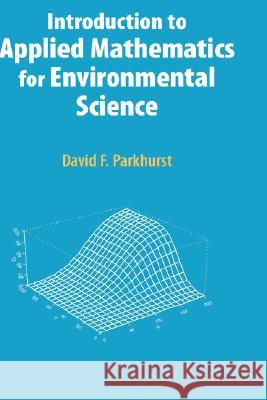Introduction to Applied Mathematics for Environmental Science » książka
Introduction to Applied Mathematics for Environmental Science
ISBN-13: 9780387342276 / Angielski / Twarda / 2006 / 317 str.
For many years, first as a student and later as a teacher, I have ob served graduate students in ecology and other environmental sci ences who had been required as undergraduates to take calculus courses. Those courses have often emphasized how to prove theo rems about the beautiful, logical structure of calculus, but have ne glected applications. Most of the time, the students have come out of such courses with little or no appreciation of how to apply calculus in their own work. Based on these observations, I developed a course de signed in part to re-teach calculus as an everyday tool in ecology and other environmental sciences. I emphasized derivations working with story problems (sometimes quite complex ones) in that course, and now in this book. The present textbook has developed out of my notes for that course. Its basic purpose is to describe various types of mathemati cal structures and how they can be apphed in environmental science. Thus, linear and non-linear algebraic equations, derivatives and in tegrals, and ordinary and partial differential equations are the basic kinds of structures, or types of mathematical models, discussed. For each, the discussion follows a pattern something like this: 1. An example of the type of structure, as apphed to environmental science, is given. 2. Next, a description of the structure is presented. 3. Usually, this is followed by other examples of how the structure arises in environmental science. 4. The analytic methods of solving and learning from the structure are discussed."











